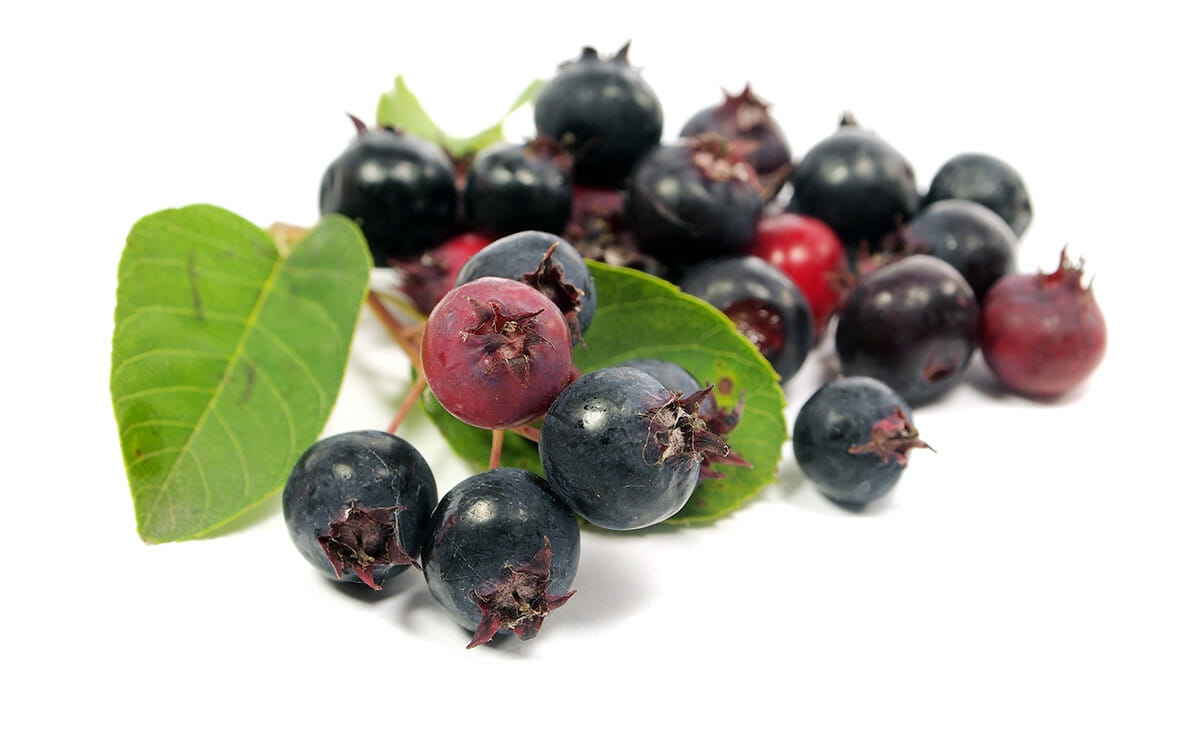A fruit that tastes like a blueberry-apple or black cherry-pear fusion.

A lesser-known cousin, the genus of flowering trees and shrubs known as Amelanchier, comes with a dizzying array of common names. Although most people will encounter the plant and its spectacular spring fruit as juneberries or serviceberries, it is also known as the shadbush, shadblow, sarvisberry, saskatoon, sugarplum and chuckley pear.
The fruit, a berry-like pome, ripens from late May through early June, turning shades of deep red, dark purple and black. It is similar in size and appearance to a blueberry, with a flavor that is uniquely Amelanchier, but best described to the unfamiliar through tenuous fusions; it is a blueberry-apple, a black cherry-pear. The flavor is accented by undertones of almond, the result of crunching through the small edible seeds. The fruit is also a veritable superfood, containing high levels of antioxidants, iron, potassium, and vitamins C, A, E and B-6.
Although gaining in popularity with commercial growers, most shoppers shouldn’t expect to see Amelanchier fruit in the supermarket. Apart from foraging, or the occasional farmer’s market, the best way to bring this fruit home is to grow it. The species of Amelanchier most regarded for their fruit (alnifolia, canadensis, laevis, arborea, stolonifera) are also North American natives with ranges that span almost the entire continent.
Amelanchier are easy to grow, and very durable; they are able to survive summer drought and extreme winter cold. They prefer well-drained soils, and can thrive in sun or in a partially shaded area. Consider using as an understory planting, or on a slope or hillside, where managing other crops might prove difficult. Trees are multi-trunked and through selective pruning can be kept at a height of about nine feet for ease of picking. A tree will start producing fruit in two to three years and at maturity can produce up to 15 pounds of fruit each season.
If the prospect of tasting the incomparable fruit of a true American native isn’t enough, Amelanchier prodigiously blooms in a showy display of white flowers in early spring and its leaves glow in tones of electric oranges and reds in the autumn.